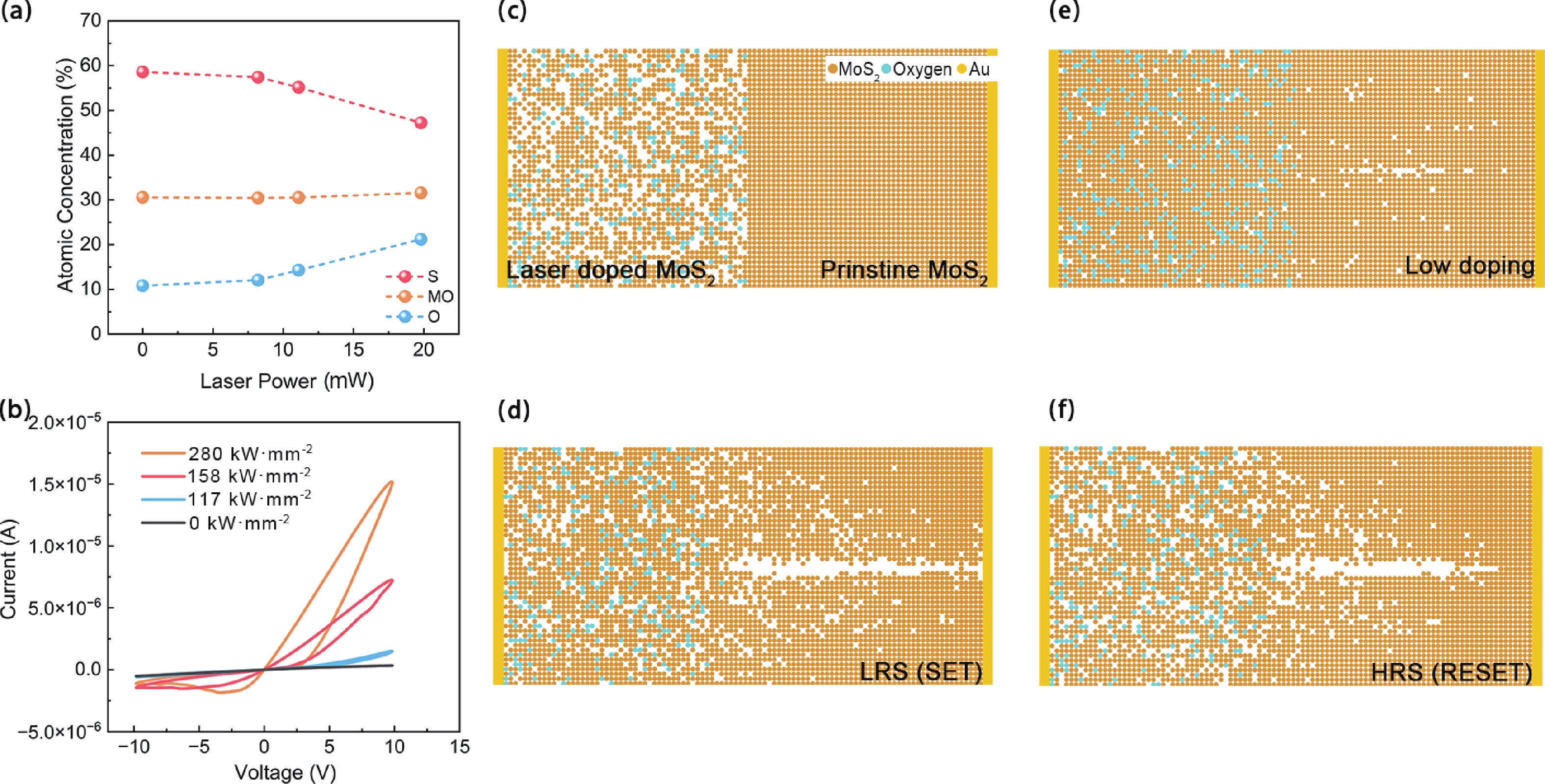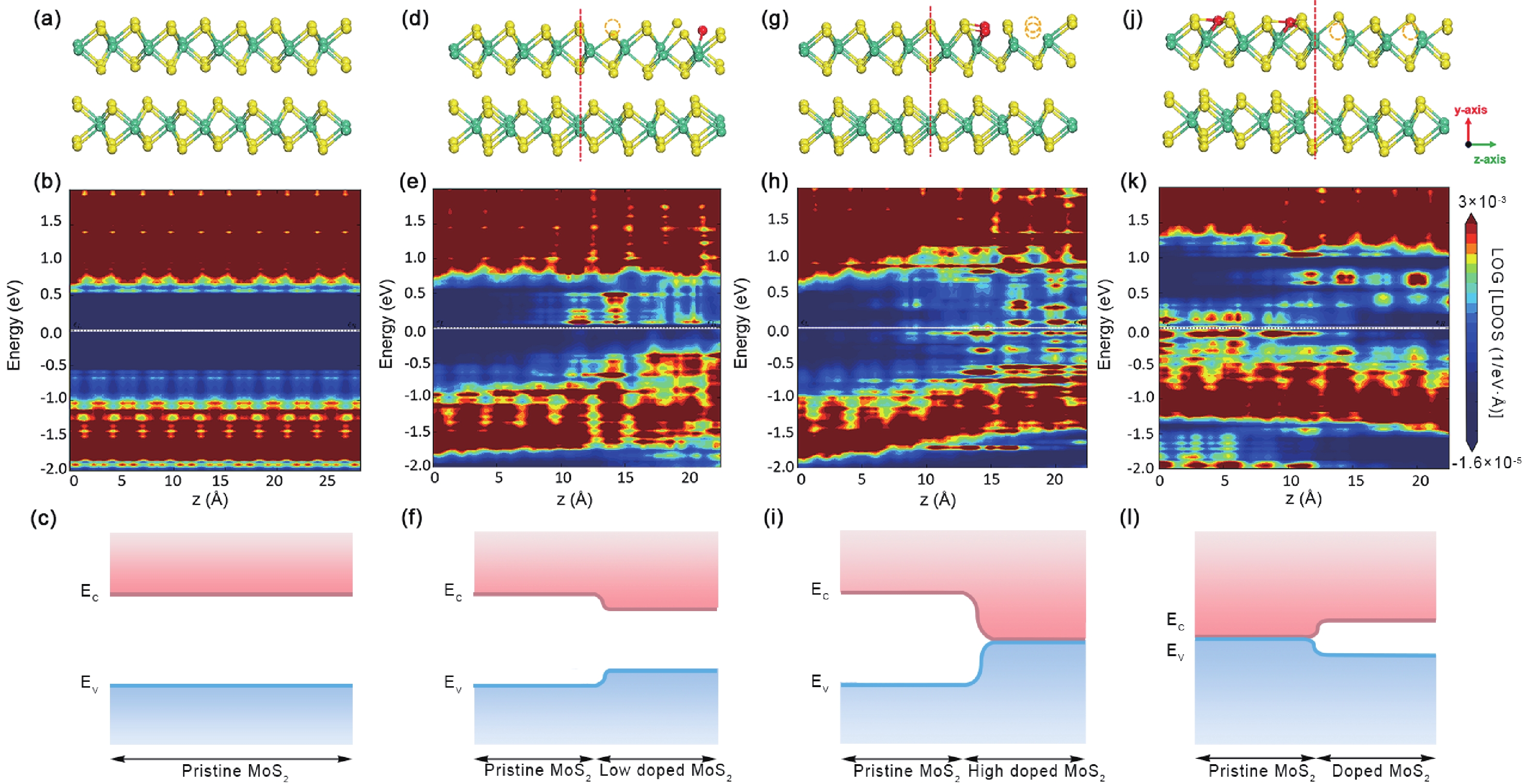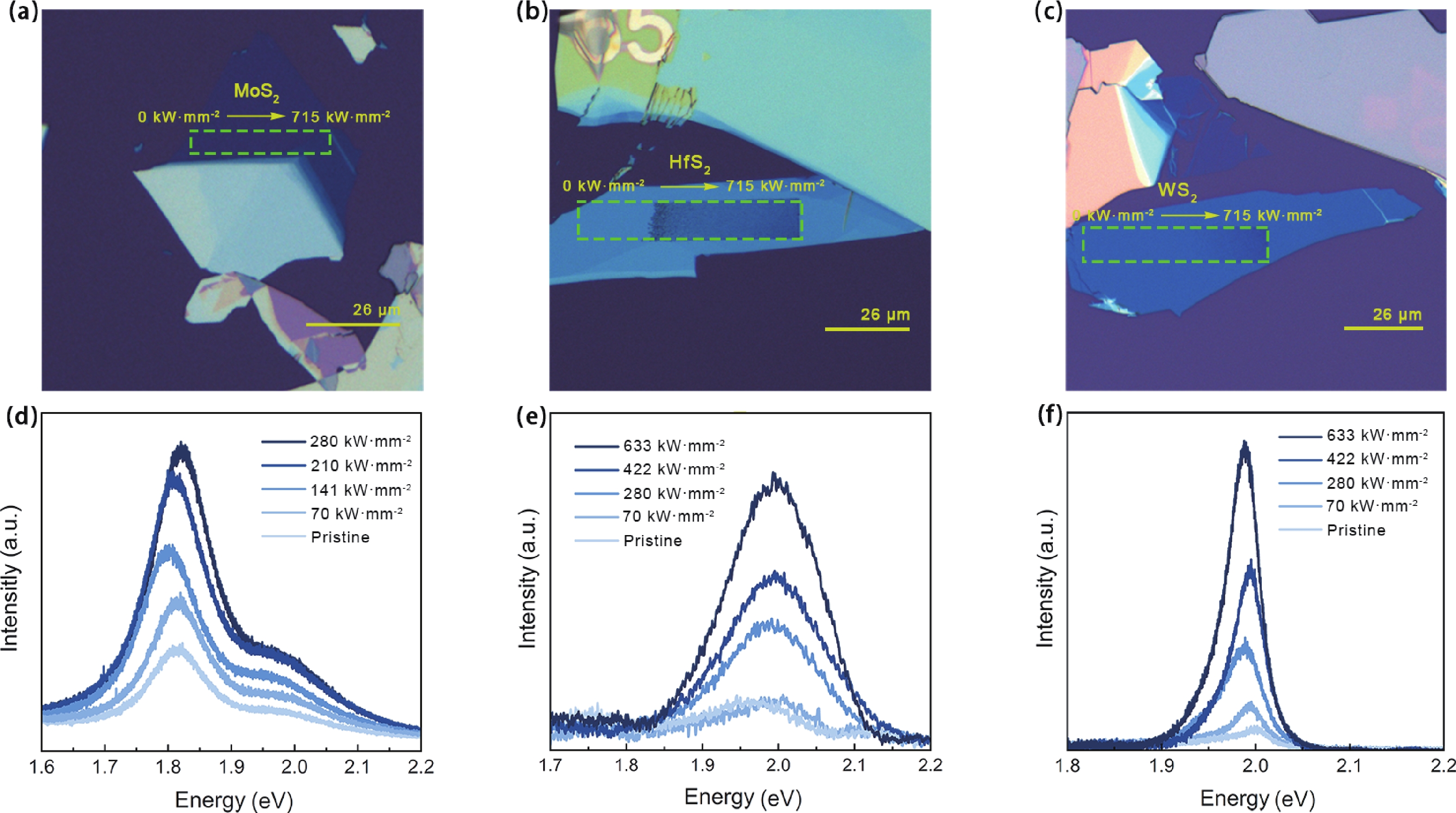| Citation: |
Xiaoshan Du, Shu Wang, Qiaoxuan Zhang, Shengyao Chen, Fengyou Yang, Zhenzhou Liu, Zhengwei Fan, Lijun Ma, Lei Wang, Lena Du, Zhongchang Wang, Cong Wang, Bing Chen, Qian Liu. Memristive feature and mechanism induced by laser-doping in defect-free 2D semiconductor materials[J]. Journal of Semiconductors, 2024, 45(7): 072701. doi: 10.1088/1674-4926/24010036
****
X S Du, S Wang, Q X Zhang, S Y Chen, F Y Yang, Z Z Liu, Z W Fan, L J Ma, L Wang, L N Du, Z C Wang, C Wang, B Chen, and Q Liu, Memristive feature and mechanism induced by laser-doping in defect-free 2D semiconductor materials[J]. J. Semicond., 2024, 45(7), 072701 doi: 10.1088/1674-4926/24010036
|
Memristive feature and mechanism induced by laser-doping in defect-free 2D semiconductor materials
DOI: 10.1088/1674-4926/24010036
More Information
-
Abstract
Memristors as non-volatile memory devices have gained numerous attentions owing to their advantages in storage, in-memory computing, synaptic applications, etc. In recent years, two-dimensional (2D) materials with moderate defects have been discovered to exist memristive feature. However, it is very difficult to obtain moderate defect degree in 2D materials, and studied on modulation means and mechanism becomes urgent and essential. In this work, we realized memristive feature with a bipolar switching and a configurable on/off ratio in a two-terminal MoS2 device (on/off ratio ~100), for the first time, from absent to present using laser-modulation to few-layer defect-free MoS2 (about 10 layers), and its retention time in both high resistance state and low resistance state can reach 2 × 104 s. The mechanism of the laser-induced memristive feature has been cleared by dynamic Monte Carlo simulations and first-principles calculations. Furthermore, we verified the universality of the laser-modulation by investigating other 2D materials of TMDs. Our work will open a route to modulate and optimize the performance of 2D semiconductor memristive devices. -
References
[1] Xu X W, Ding Y K, Hu S X, et al. Scaling for edge inference of deep neural networks. Nat Electron, 2018, 1, 216 doi: 10.1038/s41928-018-0059-3[2] Yoon J H, Wang Z R, Kim K M, et al. An artificial nociceptor based on a diffusive memristor. Nat Commun, 2018, 9, 417 doi: 10.1038/s41467-017-02572-3[3] Zidan M A, Strachan J P, Lu W D. The future of electronics based on memristive systems. Nat Electron, 2018, 1, 22 doi: 10.1038/s41928-017-0006-8[4] Sebastian A, Le Gallo M, Khaddam-Aljameh R, et al. Memory devices and applications for in-memory computing. Nat Nanotechnol, 2020, 15, 529 doi: 10.1038/s41565-020-0655-z[5] Xia Q F, Yang J J. Memristive crossbar arrays for brain-inspired computing. Nat Mater, 2019, 18, 309 doi: 10.1038/s41563-019-0291-x[6] Du L N, Wang Z C, Zhao G. Novel intelligent devices: Two-dimensional materials based memristors. Front Phys, 2022, 17, 23602 doi: 10.1007/s11467-022-1152-7[7] Zhou Z C, Yang F Y, Wang S, et al. Emerging of two-dimensional materials in novel memristor. Front Phys, 2021, 17, 23204 doi: 10.1007/s11467-021-1114-5[8] Nili H, Adam G C, Hoskins B, et al. Hardware-intrinsic security primitives enabled by analogue state and nonlinear conductance variations in integrated memristors. Nat Electron, 2018, 1, 197 doi: 10.1038/s41928-018-0039-7[9] Bertolazzi S, Bondavalli P, Roche S, et al. Nonvolatile memories based on graphene and related 2D materials. Adv Mater, 2019, 31, 1806663 doi: 10.1002/adma.201806663[10] Lee J H, Du C, Sun K, et al. Tuning ionic transport in memristive devices by graphene with engineered nanopores. ACS Nano, 2016, 10, 3571 doi: 10.1021/acsnano.5b07943[11] Liu S, Lu N D, Zhao X L, et al. Eliminating negative-SET behavior by suppressing nanofilament overgrowth in cation-based memory. Adv Mater, 2016, 28, 10623 doi: 10.1002/adma.201603293[12] Wang C, Xiao R C, Liu H Y, et al. Room-temperature third-order nonlinear Hall effect in Weyl semimetal TaIrTe4. Natl Sci Rev, 2022, 9, nwac020 doi: 10.1093/nsr/nwac020[13] Euvrard J, Yan Y F, Mitzi D B. Electrical doping in halide perovskites. Nat Rev Mater, 2021, 6, 531 doi: 10.1038/s41578-021-00286-z[14] Shi Y Y, Liang X H, Yuan B, et al. Electronic synapses made of layered two-dimensional materials. Nat Electron, 2018, 1, 458 doi: 10.1038/s41928-018-0118-9[15] Tan X, Wang S, Zhang Q X, et al. Laser doping of 2D material for precise energy band design. Nanoscale, 2023, 15, 9297 doi: 10.1039/D3NR00808H[16] Wang X W, Wang B L, Zhang Q H, et al. Grain-boundary engineering of monolayer MoS2 for energy-efficient lateral synaptic devices. Adv Mater, 2021, 33, 2170251 doi: 10.1002/adma.202170251[17] Wang Q H, Kalantar-Zadeh K, Kis A, et al. Electronics and optoelectronics of two-dimensional transition metal dichalcogenides. Nat Nanotechnol, 2012, 7, 699 doi: 10.1038/nnano.2012.193[18] Islam M R, Kang N, Bhanu U, et al. Tuning the electrical property via defect engineering of single layer MoS2 by oxygen plasma. Nanoscale, 2014, 6, 10033 doi: 10.1039/C4NR02142H[19] Nan H Y, Wang Z L, Wang W H, et al. Strong photoluminescence enhancement of MoS2 through defect engineering and oxygen bonding. ACS Nano, 2014, 8, 5738 doi: 10.1021/nn500532f[20] Kang N, Paudel H P, Leuenberger M N, et al. Photoluminescence quenching in single-layer MoS2 via oxygen plasma treatment. J Phys Chem C, 2014, 118, 21258 doi: 10.1021/jp506964m[21] Shen P C, Lin Y X, Su C, et al. Healing of donor defect states in monolayer molybdenum disulfide using oxygen-incorporated chemical vapour deposition. Nat Electron, 2022, 5, 28 doi: 10.1038/s41928-021-00685-8[22] Wang M, Cai S H, Pan C, et al. Robust memristors based on layered two-dimensional materials. Nat Electron, 2018, 1, 130 doi: 10.1038/s41928-018-0021-4 -
Supplements
 Supplementary_Information.pdf
Supplementary_Information.pdf

-
Proportional views

§Xiaoshan Du, Shu Wang, Qiaoxuan Zhang, and Shengyao Chen contributed equally to this work and should be considered as co-first authors.




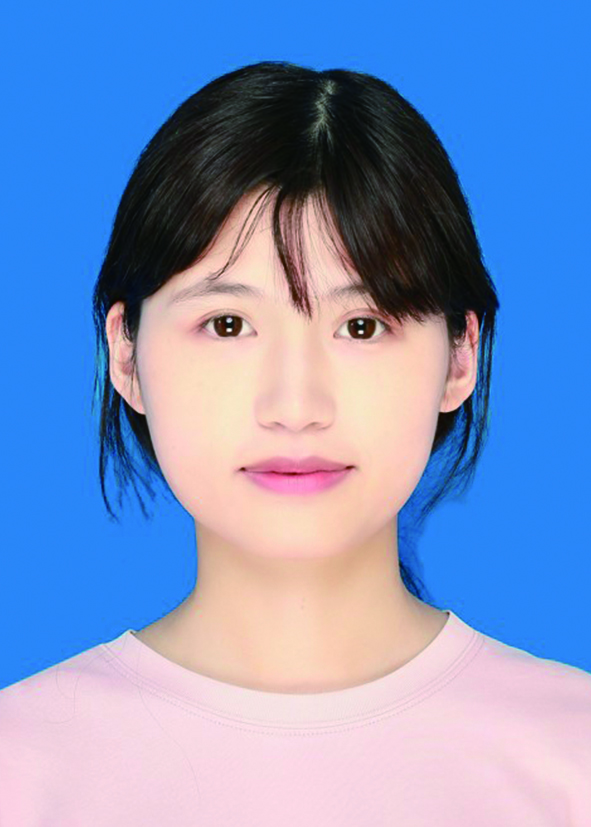 Xiaoshan Du received her bachelor's degree from Shandong University of Science and Technology in 2021 and is now studying for her master's degree at Shandong University of Science and Technology under the guidance of Bing Chen. She was jointly trained at the National Center of Nanoscience and Technology under the guidance of Qian Liu. Her research direction is to fabricate memristor devices by laser processing two-dimensional materials.
Xiaoshan Du received her bachelor's degree from Shandong University of Science and Technology in 2021 and is now studying for her master's degree at Shandong University of Science and Technology under the guidance of Bing Chen. She was jointly trained at the National Center of Nanoscience and Technology under the guidance of Qian Liu. Her research direction is to fabricate memristor devices by laser processing two-dimensional materials. Qian Liu, a Japanese Ph.D. in engineering, is a full-time professor at the National Center for Nanoscience and Technology and at the University of the Chinese Academy of Sciences. His research interests focus on laser−matter interaction, as well as the development of innovative equipment and new technologies related to novel micro/nano fabrications.
Qian Liu, a Japanese Ph.D. in engineering, is a full-time professor at the National Center for Nanoscience and Technology and at the University of the Chinese Academy of Sciences. His research interests focus on laser−matter interaction, as well as the development of innovative equipment and new technologies related to novel micro/nano fabrications.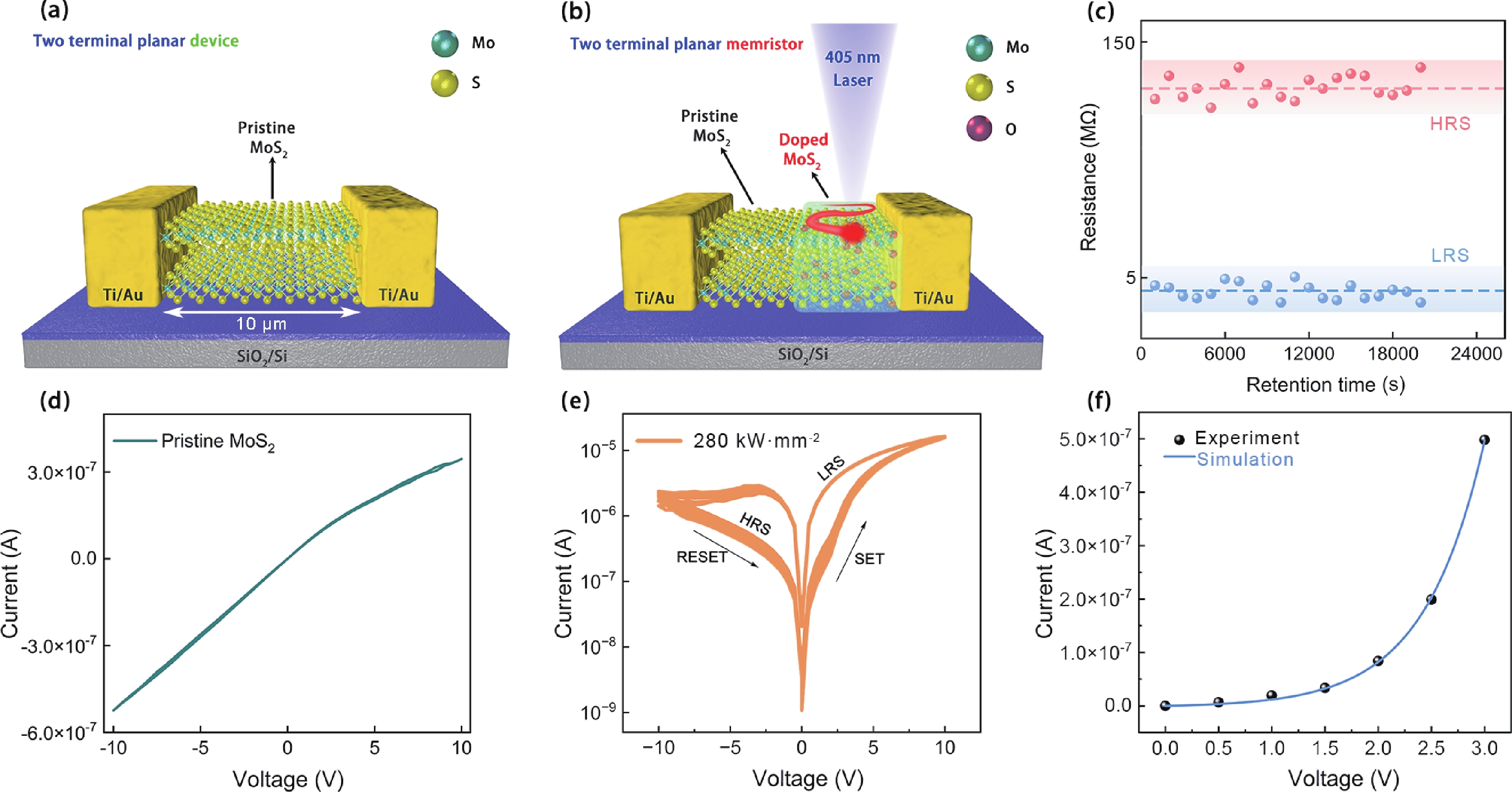
 DownLoad:
DownLoad:
